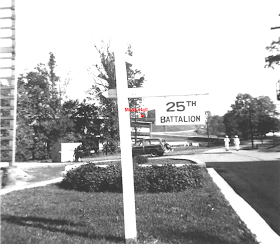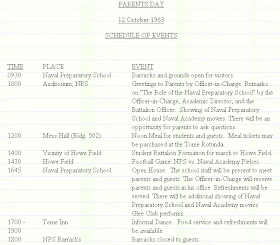USNTC Bainbridge -- Second Regiment: Barracks 223.
April 1943. ▼

USNTC Bainbridge -- Second Regiment: Barracks 224 another view.
April 1943.
The barracks seen beyond is situated adjacent to the drill field, one of four barracks that paralleled southeastern side of the grinder. ▼

USNTC Bainbridge -- Second Regiment: Looking in Fiske Road to Second Regiment Drill Hall arracks 224 is on right.
Construction is nearing April 1943, so urgent was the need for training facilities that recruits commenced training while construction was still taking place.▼

USNTC Bainbridge -- Second Regiment: View from Mess Hall 202.
April 1943. ▼

USNTC Bainbridge -- Second Regiment: View from Mess Hall 202.
April 1943. ▼

USNTC Bainbridge -- Second Regiment: View from Mess Hall 202
April 1943. ▼

USNTC Bainbridge -- Second Regiment: Mess Hall 202.
April 1943. ▼

USNTC Bainbridge -- Second Regiment: Wash House.
April 1943.
A recruit's clothing was washed daily entirely by hand with soap and a brush. Interesting the wash tables in the photo are constructed of wood.
Wash houses were situated where ever convenient to construct and each one generally served 2 or 3 barracks. ▼

USNTC Bainbridge -- Second Regiment: Image of the 25th Battalion sign.
The sign stood out front of Barracks 227.
A partial view of the mess hall is visible in the distance.
Looking out the road as it winds its way around another barracks and up onto 2nd regiment grinder.
Check out the recruit standing watch at the dumpster.▼

USNTC Bainbridge -- Second Regiment: As it was in 1978 and as it is today.
The red arrow points to the location of the 25th Battlion sign in the above photo. ▼

















































